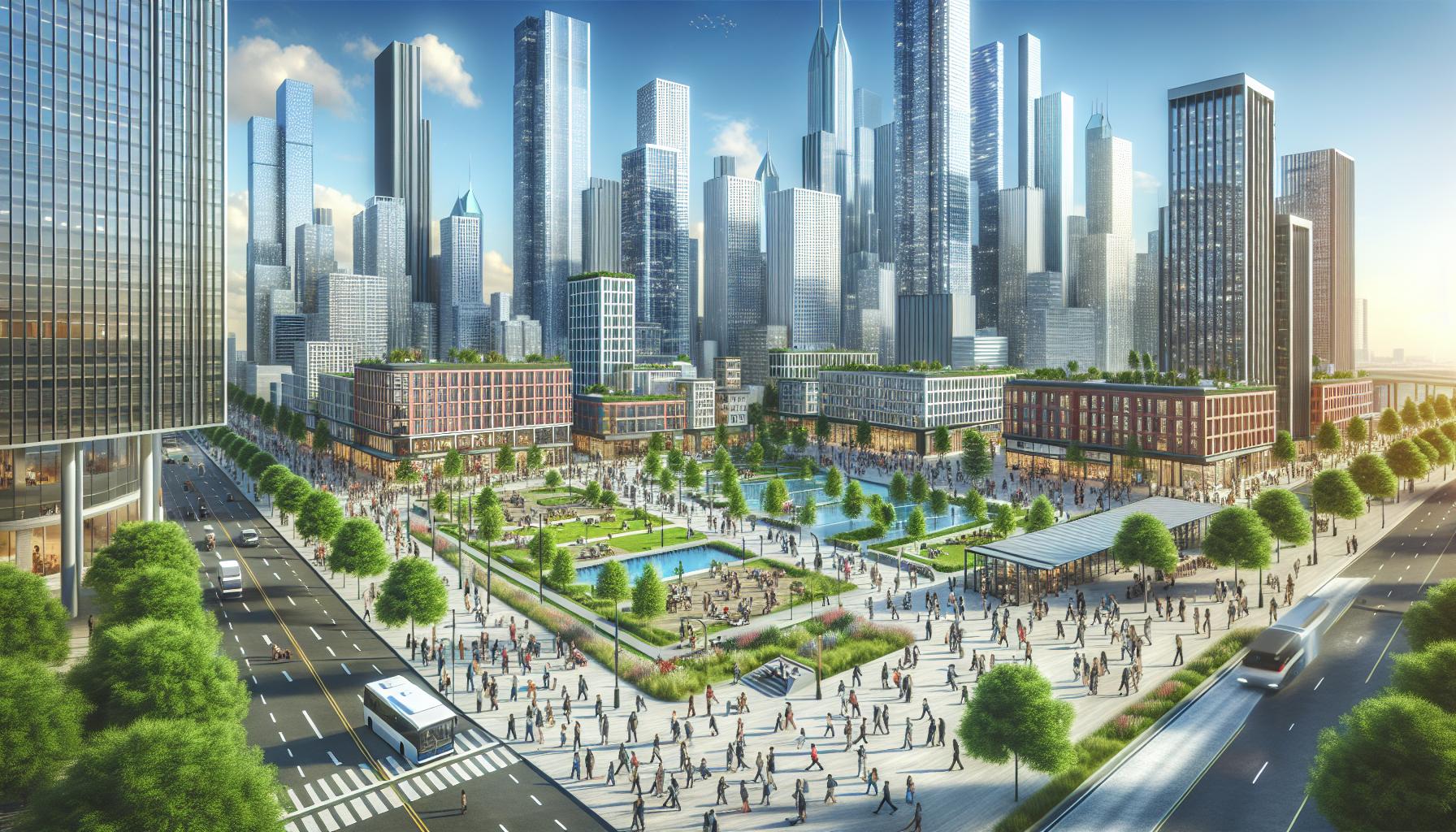Phone:
(701)814-6992
Physical address:
6296 Donnelly Plaza
Ratkeville, Bahamas.

Zoning laws shape the physical and economic landscape of communities across America. These regulations determine how property owners can use their land while balancing neighborhood character preservation economic development and environmental protection.
Recent shifts in zoning policies reflect growing challenges in urban development. From affordable housing initiatives to mixed-use developments cities and towns are adapting their zoning codes to address modern needs. These changes impact everything from property values and neighborhood demographics to local business opportunities and environmental sustainability.
Modern zoning regulations establish specific guidelines for land use in different areas within a jurisdiction. These rules define how property owners can develop their land while maintaining community standards.
Primary zoning classifications regulate property use across five main categories:
Each classification includes subcategories with specific density requirements, height restrictions, setback limits:
| Zoning Change Type | Implementation Rate (2020-2023) | Average Adoption Time |
|---|---|---|
| Density Bonuses | 65% of major cities | 8 months |
| Form-Based Codes | 42% of municipalities | 14 months |
| Overlay Districts | 78% of urban areas | 6 months |

U.S. cities implemented significant zoning policy changes between 2022-2023 to address housing affordability challenges and urban density requirements. These updates reflect evolving approaches to urban development and community needs.
Mixed-use zoning amendments expanded across 85 major U.S. metropolitan areas in 2023. Cities like Portland, Austin and Minneapolis eliminated single-use commercial zones in downtown districts, allowing residential units above retail spaces. The reforms permit vertical mixed-use developments combining 3+ uses within single buildings: retail, office, residential, entertainment or civic spaces.
| City | Mixed-Use Projects Approved (2023) | Average Height Allowance |
|---|---|---|
| Portland | 28 | 12 stories |
| Austin | 35 | 15 stories |
| Minneapolis | 42 | 10 stories |
California Senate Bill 9 led 15 cities to update ordinances allowing lot splits and duplex construction on single-family parcels. Seattle’s Residential Small Lot zoning now permits 3 housing units on 2,000-square-foot lots. Chicago expanded transit-oriented development zones to allow 6-story buildings within 1/2 mile of transit stations, increasing density allowances by 50%.
| Reform Type | Cities Adopted | Average Density Increase |
|---|---|---|
| Lot Splits | 15 | +100% |
| Small Lot | 8 | +200% |
| TOD Zones | 12 | +50% |
Zoning modifications create direct ripple effects across real estate markets through altered property values, development patterns, and investment landscapes. These changes reshape market dynamics in both residential and commercial sectors.
Property values respond immediately to zoning amendments based on land use flexibility and development potential. Multi-family rezoning in single-family neighborhoods increases land values by 25-40% in urban areas. Upzoning initiatives in cities like Seattle and Minneapolis produced a 15% average value increase for properties within 0.5 miles of transit stations after rezoning implementation in 2022.
Development patterns show measurable shifts:
Zoning changes create specific investment entry points in evolving market segments:
Primary opportunities include:
| Investment Type | Average ROI (2022-2023) | Development Timeline |
|---|---|---|
| Mixed-Use TOD | 18.5% | 24-36 months |
| Residential Conversion | 22.3% | 12-18 months |
| Lot Subdivision | 15.7% | 6-12 months |
| Industrial Mixed-Use | 20.1% | 36-48 months |
Environmental protection measures integrate with modern zoning regulations through specific requirements for sustainable development practices and green space preservation. Recent zoning updates across major U.S. cities emphasize ecological conservation alongside urban growth.
New zoning codes mandate sustainable building practices in development projects. Commercial buildings over 50,000 square feet must achieve LEED certification or equivalent standards in 35% of U.S. metropolitan areas. Recent regulations require:
| Sustainability Requirement | Implementation Rate (2023) | Cost Impact per sq ft |
|---|---|---|
| LEED Certification | 35% of metro areas | $3-5 additional |
| Solar Panels | 42% of new construction | $7-9 additional |
| EV Charging | 28% of parking lots | $2-4 additional |
| Green Space Type | Required Coverage | Implementation Timeline |
|---|---|---|
| Commercial | 15-20% | Immediate |
| Residential | 25-35% | 12-month phase-in |
| Industrial | 10-15% | 24-month phase-in |
Community responses to zoning reform initiatives across U.S. cities reveal diverse perspectives on urban development changes. Public participation in zoning discussions increased by 45% from 2021 to 2023, primarily through virtual platforms and hybrid meeting formats.
Residents engage with zoning reforms through multiple channels:
| Engagement Method | Participation Rate | Response Time |
|---|---|---|
| Virtual Meetings | 65% | 90 minutes avg. |
| Online Surveys | 42% | 15 minutes avg. |
| Mobile Apps | 38% | 5 minutes avg. |
| Social Media | 78% | 3 minutes avg. |
| Preservation Measure | Implementation Rate | Success Rate |
|---|---|---|
| Historic Districts | 75% | 95% |
| Design Reviews | 88% | 82% |
| Height Restrictions | 92% | 89% |
| Setback Rules | 96% | 91% |
Zoning regulations continue to shape America’s urban landscape through innovative policies that address modern challenges. These evolving frameworks now balance traditional neighborhood preservation with pressing needs for affordable housing sustainable development and economic growth.
The shift toward mixed-use developments transit-oriented zones and environmental conservation reflects a more dynamic approach to urban planning. With increased community engagement and digital participation cities are making more informed decisions about their development paths.
As communities adapt to changing demographics and sustainability requirements zoning remains a crucial tool for creating livable spaces. The future of urban development lies in these flexible responsive policies that prioritize both community needs and environmental stewardship.